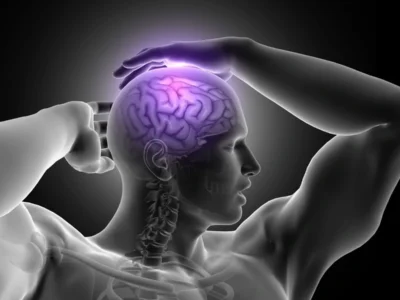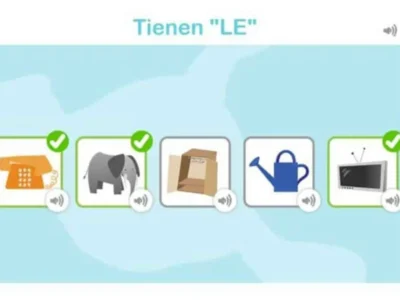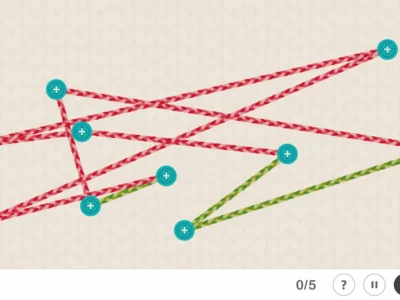Vanessa Triviño Burbano explores in this article the importance of executive functions at work, how they can be affected and what intervention strategies can be implemented to improve professional performance.
Introduction
In the workplace, executive functions play a crucial role in planning, decision-making and problem solving. These cognitive skills enable professionals to manage their tasks, adapt to change and maintain a high level of productivity. However, various conditions can affect these functions, negatively impacting performance at work.
Neurorehabilitation of executive functions emerges as an effective solution to optimize work performance through specific cognitive rehabilitation strategies.
This approach is based on the implementation of neurocognitive interventions aimed at strengthening processes such as working memory, cognitive flexibility and inhibitory control, which are essential for optimal job performance in dynamic and demanding environments. Through structured neuropsychological rehabilitation programs, functions such as planning, decision-making and metacognition are optimized, allowing the professional to effectively manage workload, set priorities and improve emotional and behavioral self-regulation.
Furthermore, neurorehabilitation of executive functions is not only key in the recovery of neurocognitive deficits secondary to acquired brain injuries or neurodegenerative disorders, but it is also applicable in mitigating executive dysfunction associated with burnout, cognitive fatigue and information overload.
Strategies based on neurotechnology, AI-assisted cognitive stimulation and directed neuroplasticity protocols allow adaptive optimization of prefrontal circuits, facilitating greater efficiency in the execution of complex tasks.
Corporate programs in neuroergonomics and neurocognitive rehabilitation not only benefit individual and collective performance, but also positively impact the optimization of human capital, increasing organizational resilience and the sustainability of talent in highly demanding environments.

Subscribe
to our
Newsletter
What are executive functions and why are they key at work?
What are executive functions?
Muchiut et al. (2021) indicate that executive functions are a set of cognitive skills that include planning, organization, cognitive flexibility, inhibitory control and working memory. They are fundamental for managing work tasks, decision-making and problem solving. Without them, professionals cannot address the difficulties they need to improve, such as planning and organization at work, affecting efficiency and productivity.
Impact of executive functions in the workplace
According to Noriega et al. (2024), executive functions influence a person’s ability to set goals, prioritize tasks and maintain concentration in an environment with various distractions. A worker with well-developed executive skills can better manage time, maintain a high level of productivity and adapt easily to changes in the work environment.
Below are the most important ones:
1. Working memory
Allows a person to hold and manipulate information while performing complex tasks. At work, this is essential for processing data, remembering instructions and coordinating different activities without losing track of what is being done. An employee with an efficient working memory can perform multiple tasks simultaneously without compromising the quality of their performance.
2. Cognitive flexibility
Helps workers change strategy when circumstances require it, find innovative solutions to problems and adapt to new working methods. In a dynamic work world where technologies and demands constantly change, cognitive flexibility becomes an essential skill for professional success.
3. Inhibitory control
Benefits employees by regulating impulses, avoiding distractions and maintaining discipline in their tasks. The ability to inhibit automatic or inappropriate responses allows a person to focus on what is really important, avoiding mistakes that could affect their performance and the company’s overall productivity.
4. Decision making
Has the function of problem solving, in resource management or in interaction with colleagues and clients. Decision-making skills allow evaluating different options, considering possible outcomes and choosing the best alternative based on organizational goals.
5. Planning
Is essential for success at work; for example, an employee who can set realistic goals, break projects into manageable tasks and follow a structured plan is more likely to be efficient and productive. These skills help avoid procrastination and ensure deadlines are met without compromising work quality.
6. Stress management and self-regulation
Are crucial aspects that depend on executive functions. In a work environment where demands and pressure can be high, the ability to manage emotions and remain calm is fundamental. A worker with good emotional control can face challenges more effectively, avoid unnecessary conflicts and contribute to a harmonious work environment.
Executive functions and business leadership
Crespo et al. (2024) mention that executive functions in leadership are significant for communicating clearly, motivating their team and resolving conflicts effectively. In addition, the leader must evaluate complex situations, anticipate problems and design appropriate solutions to maintain the organization’s optimal functioning.
Teamwork is also influenced by executive functions, since collaboration requires cognitive flexibility, emotional regulation and planning. An employee with well-developed executive functions can better coordinate with colleagues, adapt to different working styles and contribute to achieving common goals.
Difficulties in executive functions can generate problems in job performance. A worker with impairments in working memory may forget important instructions or have difficulty completing complex tasks. A person with low inhibitory control may become easily distracted and make impulsive errors. Lack of planning can lead to procrastination and inefficient time management, affecting productivity.
Companies can greatly benefit by promoting the optimization of executive functions in their employees. Training in time management, problem solving and decision making can improve overall employee performance. The implementation of strategies such as constant feedback, the establishment of clear goals and the use of organizational tools can also contribute to strengthening these skills.
Executive functions are not limited to individual performance, but also influence organizational culture. A work team made up of people with developed skills can operate more efficiently, resolve conflicts more easily and adapt better to change. This translates into greater cohesion within the company and a more positive and productive work environment.
Today, where remote work and digitalization have transformed the way many companies operate, executive functions become even more relevant. Self-discipline, time management and the ability to concentrate are essential to maintain productivity in environments where distractions are frequent. Employees who can self-regulate and organize effectively have a significant advantage in this new work landscape.
The development of executive functions is not static and can be improved with appropriate strategies. Cognitive training, mindfulness practice and the implementation of healthy habits can help strengthen these skills. Companies can play a key role in this process by offering training programs and fostering an organizational culture that values personal and professional development, improving productivity and contributing to well-being and job satisfaction.
Strategies and intervention programs for executive functions in the workplace
According to Cárdenas (2025), to address these deficits, strategies have been developed that can be classified into cognitive, behavioral and organizational approaches, each with specific methodologies to boost work performance.
1. Cognitive stimulation
Cognitive stimulation is a key strategy in the rehabilitation of executive functions. It is based on exercises that challenge the brain through problem solving, task planning and decision making. Activities such as puzzles, logic games and simulations of work scenarios can help strengthen these skills.
Working memory training
In this context, one of the most used approaches in cognitive rehabilitation is working memory training. This type of intervention includes exercises designed to improve the retention and manipulation of information in short-term memory.
Computer applications and cognitive training programs, as well as the use of specialized software such as NeuronUP, benefit the patient through problem-solving, critical thinking and working memory exercises, proving effective in improving performance on tasks that require concentration and simultaneous information processing.
2. Occupational therapy
Occupational therapy also plays a fundamental role in cognitive rehabilitation within the workplace. Occupational therapists design programs tailored to the individual needs of employees, focusing on improving autonomy and efficiency in performing their duties. Through guided practice and the use of support tools, such as electronic planners and organization apps, recovery of affected executive functions is facilitated.
3. Behavior modification
Approaches based on behavior modification seek to improve self-regulation and time management in the workplace. Strategies such as positive reinforcement, structured feedback and the implementation of reward systems can promote more organized and efficient work habits. Self-instruction and modeling are also useful techniques, as they allow employees to learn to structure their tasks and make decisions progressively.
4. Organizational intervention programs
Organizational intervention programs include changes in the work environment to optimize the performance of employees with difficulties in executive functions. Adapting the workplace by reducing distractions, implementing structured schedules and using time management tools such as task lists and digital reminders can facilitate cognitive rehabilitation and improve productivity.
5. Cognitive coaching
Cognitive coaching is another effective strategy in the rehabilitation of executive functions in the workplace. Through individual or group sessions, employees receive guidance to improve their planning, impulse control and problem-solving abilities. This approach can also include mindfulness techniques and resilience training to reduce the impact of stress and improve emotional regulation at work.
6. Neurofeedback
Intervention programs based on neurofeedback have gained popularity in recent years as a tool for improving executive functions. This method uses technology to measure brain activity and provide real-time feedback, allowing employees to train their concentration and self-control more effectively. Although it requires specialized equipment, it has shown positive results in strengthening cognitive skills in the workplace.
Benefits of neurorehabilitation in the workplace
Acosta et al. (2024) point out that neurorehabilitation applied to the workplace has multiple advantages, both for workers and companies, especially in cases of neurological injuries, neurodegenerative diseases or disorders that affect job performance.
Below are some of the main benefits that may occur depending on the case, both for employees and for the company.
Benefits of neurorehabilitation in the workplace for employees
- Improvement of functionality and autonomy:
- Helps recover affected motor, cognitive and sensory skills.
- Facilitates reintegration into work activities with greater independence.
- Reduction of stress and anxiety: By feeling more capable of performing their tasks, anxiety about their performance is reduced and greater confidence is generated.
- Increase in productivity: Improving concentration, memory and motor skills, optimizing performance.
- Prevention of relapses or complications: An appropriate approach minimizes the risk of new injuries or the worsening of the neurological condition.
- Workplace adaptation: Ergonomic or technological adjustments can be implemented to facilitate return to work.
Benefits of neurorehabilitation in the workplace for the company
- Reduction of absenteeism: By improving employee recovery, prolonged leaves and associated costs are reduced.
- Talent retention: Neurorehabilitation demonstrates commitment to employee well-being, increasing loyalty and satisfaction.
- Better organizational climate: Promotes an inclusive and supportive environment, generating team motivation.
- Compliance with inclusion regulations: Adaptations for workers with disabilities, and neurorehabilitation help meet these requirements.
- Increase in operational efficiency: Employees who have benefited from cognitive stimulation interventions can return with better skills and strategies to manage their work more efficiently.
Conclusion
A work environment that fosters optimization of executive functions can make a difference in employee productivity and well-being. The implementation of structured work dynamics, active breaks and methodologies such as mindfulness contribute to emotional regulation and improved focus. Likewise, continuous training in cognitive skills not only strengthens resilience to work-related stress, but also promotes a more efficient and innovative organizational culture.
Furthermore, investment in neurorehabilitation programs generates long-term benefits for both employees and companies. A work team with well-developed executive functions is more adaptable to change, manages time better and makes more accurate decisions. As a result, organizations may experience a reduction in absenteeism, an increase in talent retention and an overall improvement in work quality, consolidating their competitiveness in the market.
Bibliography
- Acosta Echavarría, Álvaro A., Montoya Arenas, DA, Landinez, D., González Uribe, AM, & Gómez Tabares, AS (2024). Effect of an executive functions cognitive training program on the planning component in adults with mild intellectual disability. Pensamiento Americano, 17 (34), e-617. https://doi.org/10.21803/penamer.17.34.617 (Original work published in 2024).
- Crespo-Bujosa, H. B., Pérez, K. N., & Alicea, J. V. (2024). Neuroscience and Positive Psychology in the Rehabilitation of Executive Functions.
- Cárdenas-Tambo, T. A. (2025). Relationship between deficits in executive functions and self-esteem, emotional regulation and social adaptation during the school stage: a systematic review. Revista UNIMAR, 43(1).
- Lepe, N., Cancino, F., Tapia, F., Zambrano, P., Muñoz, P., Gonzalez, I., & Ramos, C. (2020). Performance in Executive Functions of Older Adults: Relationship With Their Autonomy and Quality of Life. Revista Ecuatoriana de Neurología, 29(1), 92-103.
- Muchiut, Á., Vaccaro, P., Pietto, M., & Dri, C. (2021). Pedagogical practices aimed at promoting executive functions in adolescents. JONED. Journal of Neuroeducation.; 2(1): 30 -43. https://doi.org/10.1344/joned.v2i1.32164
- Noriega-Martínez, G., Gálvez Amores, I. G., Martínez Mantovani, M., & Montenegro, M. (2024). Work-Related Stress and Executive Functions in teachers of the Comprehensive Early Childhood Care Center (CAIPI) of the district of Panama. Investigación Y Pensamiento Crítico, 12(2), 54–67. https://doi.org/10.37387/ipc.v12i2.387
If you enjoyed this blog post about the neurorehabilitation of executive functions in the workplace, you will likely be interested in these NeuronUP articles:
“This article has been translated. Link to the original article in Spanish:”
Neurorrehabilitación y estimulación de las funciones ejecutivas en el mundo laboral








Leave a Reply